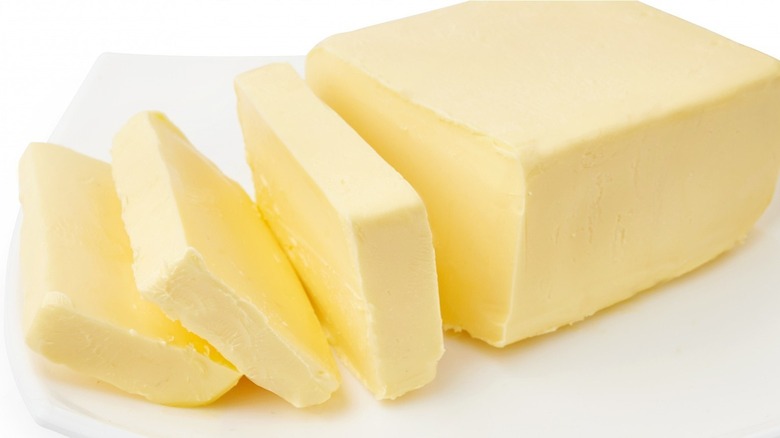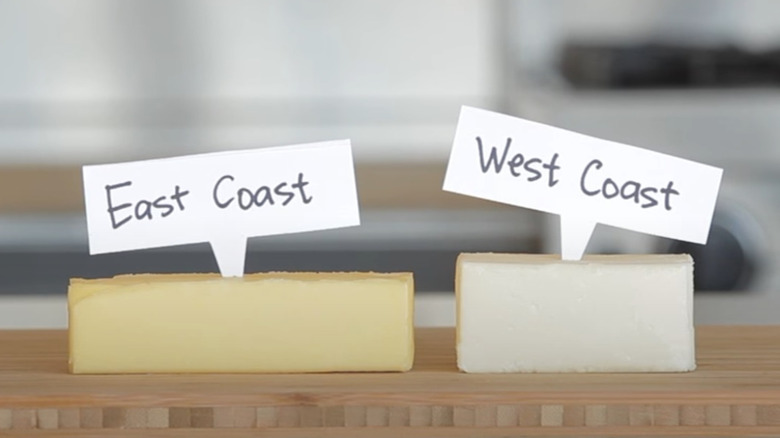Does The East Coast Really Have Different Butter From The West Coast?
It's not just time zones and regional specialty eats that change from one side of the country to the other; some favorite food chains and products look different, too. Eat This, Not That! shares some examples, like Hardee's restaurants on the East Coast, which are known as Carl's Jr. on the West Coast. There's also Hellmann's Mayonnaise that's sold as Best Foods Mayo on the West Coast, and Edy's Ice Cream changes its brand name to Dreyer's on the west side of the country, too. This can all come as quite a shock when trying to find your favorite foods while on the road or after a big move. Sure, it's not the stuff of East Coast/West Coast rapper feuds or anything, but still, it's unsettling.
One Twitter user recently had a shock when they realized that even humble butter isn't immune to cross-country changes. In a tweet, @Cabel shares an ad for a "smarter" butter dish that promises to better accommodate "West and East Coast Butter." As the Twitter poster said, echoing all our feelings, "I'm sorry, what?" If you've only ever lived in one part of the country or the other, you probably share this confusion — after all, isn't a stick of butter the same wherever you go, and butter dishes, too? Nope, it turns out there really is a difference.
East and West Coast butters are different because of changing technology
Before you panic, rest assured that in all cases, we're still talking about real butter that's made from cows' milk (meaning, neither coast's dairy producers are trying to pull a fast one). Instead, it's apparently the size and shape of the sticks of butter that might catch you off-guard, depending on where you are in the country. Huff Post shares that the butter familiar to Easterners comes in long, narrow sticks — it first was the idea of a New Orleans chef circa 1907 and then became the standard for a manufacturing process that ramped up with the Elgin Butter Company in Illinois. This size and shape were so favored across this region that The Kitchn even says it's known as "Elgin-style."
When the West coast dairy industry decided to get bigger into the butter game in the '60s, however, they didn't bother using existing technology: They used newer butter packaging equipment that created sticks that are shorter and wider, cutely known as "stubbies," which quickly became the standard for butter sticks in the Western half of the country.
So, when a West Coaster first sees East Coast butter (or vice-versa), the anxiety is understandable: How is a short, wide stick of this dairy product supposed to fit in a narrow, East Coast butter dish? Companies like OXO solve that problem with dishes that hold either style (seen on YouTube). And then there's the whole problem with recipes: When one calls for a stick of butter, do they mean an Elgin or a Stubby? Huff Post says that, luckily, we can rest easy on that one. Both butter stick styles have the same amount of butter: Eight tablespoons in each stick.

